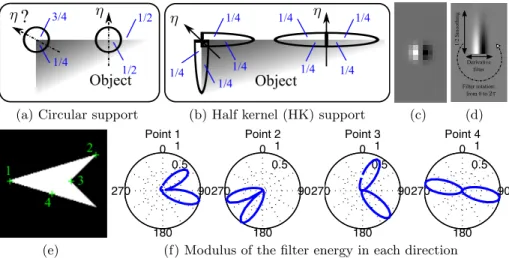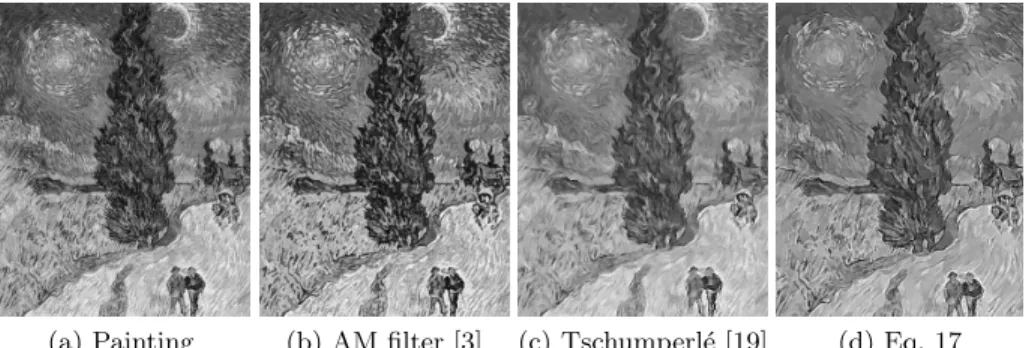Derivative Half Gaussian Kernels and Shock Filter
Texte intégral
Figure


Documents relatifs
the fact that the author of this method (Tschumperl´e, 2006) has demonstrated that it better preserves cor- ners and small details in the image, as the other ten- sorial
The contour detection step brings a more precise direction of the gradient than shock fil- ters using isotropic Gaussian kernels, thus it preserves better corners and small objects
The obtained correspondences are used to map chroma information from the reference to the target image, pro- ducing an initial colorization result.. Finally, a regularization
At the same time, how- ever, the RO approach also tempers the AO here: because there is an objective reality underlying the concepts of the domain experts, there is room for critique
The problem here consists in extracting the cleavage facets from a fractured surface in steel (MEB image).. A rather complex combination of contrast and distance functions is used
The diffusion tensor used to restore an image is anisotropic on the edges, with a small diffusion coefficient on primary edges and a larger one on the secondary edges.. This
We study a time-delay regularization of the anisotropi diusion model for image denoising of Malik.. and Perona, whih has been proposed by Nitzberg
In this paper we propose a mathematically sound method to perform optimal partitions and apply it to image restoration and classification of greyscale and color images.. Let